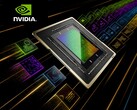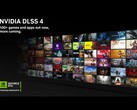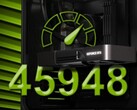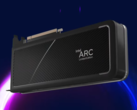Announced at CES 2025, DLSS 4 technology promised improved visuals along with enhanced game performance. Besides Multi Frame Generation and the Transformer neural model, Nvidia also introduced several new AI features, including RTX Neural Materials and Neural Texture Compression (our report).
Both technologies aim to make texture compression and rendering faster and more efficient, resulting in lower VRAM usage and potentially better performance. With bold claims of up to a 96% reduction in VRAM usage, there were no practical demonstrations of the new technologies for quite some time—until now. Surprisingly, the first (though early and very basic) real tests show that the future Nvidia and Microsoft tech can meet its claims.
As X user @opinali (SWE at Google), who is mainly known for posting some short and informative GPU performance tests, claims, he was able to conduct the first benchmarks using Nvidia's new Neural Texture Compression (NTC) and Microsoft's DirectX Raytracing 1.2 Cooperative Vector. For that matter, @opinali (almost) successfully installed Nvidia's preview driver version 590.26 alongside the RTX NTC Beta from Github (GeForce RTX 5080 was used for testing).
As the author himself suggests, this initial comparison is very simple but demonstrates Nvidia's NTC and DXR 1.2 combination being able to boost performance by up to 80% and reduce VRAM usage by an impressive 90% - the figures that initially seem almost unbelievable.
In short, these impressive results are achieved by small neural networks integrated into texture rendering and compression processes. The main point is that implementing these technologies was only possible because of Microsoft's DirectX 12 Cooperative Vectors. This technology enables the use of any AI-enabled hardware, not just Nvidia GPUs, but there's a catch: there are still no DXR 1.2 drivers for the main alternatives, AMD and Intel.
That said, @opinali was still able to conduct Neural Texture Compression tests using the AMD Radeon RX 9070 XT, which also showed some impressive results (+10% over the RTX 5080 using Vulkan, for example).
If Nvidia successfully implements the improvements mentioned in the final driver version, GPUs with lower VRAM amounts (such as those with 4GB, 6GB, or 8GB) could become a more feasible option for gamers. The old joke about needing to "download more VRAM" might even turn into a reality.
That said, it is still unclear whether older GPU generations from AMD, Nvidia, and Intel will support the new features. Many gamers might still need to buy a current GPU, but not the most expensive one, if AI helps tame down the VRAM requirements of games.













